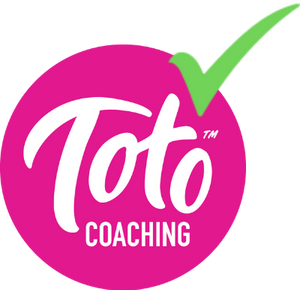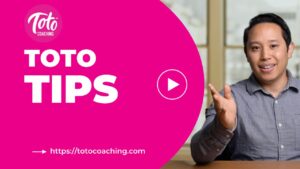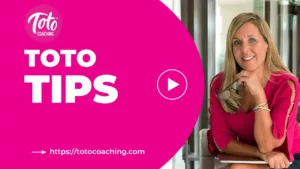Does the success of your site hinges only on aesthetics but not on something more profound—emotional responses?
Watch this video or read the article below
![]()
Transcript
Whether you like it or not, when visitors come to your website they will have an emotional response.If you don’t remember anything else from this lesson remember this: You want people to come to your website and sigh out loud and say to themselves, “Yes! I have found what I am looking for!!!” That my friends, is the ultimate goal in all of this course.
If you have a website right now, think about what your visitors are feeling when they look at your website. Do they have a positive feeling or a negative feeling? What are some of the factors that make someone feel a positive feeling or a negative feeling?
The reason you should ask yourself these questions is because visitors to your website will translate the feeling that they feel when they see your website to You as a company, to the services you provide and to the products you sell.
If they have a good emotional response, they are more likely to have a good impression of your company.
Let’s go over this a little more in detail
The Art of Designing Websites that Elicit Emotions
A visitor browses through your website. As they click from page to page, he/she says,”Yes, this is exactly what I’ve been searching for.”
That right there is the ultimate goal. We want visitors to find answers and solutions, creating a lasting positive impression. If you have a website, consider what your visitors might be feeling. Is it a positive or negative emotion? The key is to understand that these feelings directly affect how your company, services, and products are perceived.
The Two Faces of Emotional Impact
Emotions wield significant influence in two key ways: motivation and memory. Positive emotions can drive engagement and purchases, while negative ones can deter users. Additionally, emotions become intertwined with consumer memory, shaping perceptions of your brand.
Face One: Motivation
Aim to create a meaningful positive experience. You want visitors not just to think, “That was nice,” but to feel a sense of relief, knowing you can solve their problems. Consider the following strategies to motivate your audience positively:
Clear Value Proposition
A value proposition is a statement that communicates the unique benefits of your product or service and why it’s better than the competition. Ensure that your value proposition is clear and prominently displayed on your website. Visitors should quickly understand how your products or services can benefit them.
Example: “Elevate Your Brand with Exceptional Design! Our freelance graphic design service goes beyond aesthetics. We blend creativity with strategy to craft visuals that resonate with your audience. From eye-catching logos to compelling marketing materials, we bring your brand to life. Choose us for designs that don’t just look good but also drive results, setting your business apart in a crowded market.”
In this instance, the value proposition emphasizes the strategic approach to design, the ability to connect with the target audience, and the focus on tangible outcomes for the client’s business. It communicates that the freelance designer isn’t just providing artistic visuals but is a partner in achieving business success through effective design.
Compelling Calls to Action (CTAs)
Calls to Action are prompts that encourage users to take a specific action, such as making a purchase, signing up for a newsletter, or requesting more information. A compelling CTA goes beyond just providing instruction; it creates a sense of urgency or emotion, motivating users to act immediately.
For your website, create CTAs that not only instruct but also inspire action. Use language that resonates emotionally and encourages users to take the next step.
For an online clothing store, a standard CTA might be “Shop Now,” but a more compelling CTA could be: “Transform your wardrobe today! Explore our latest collection and embrace style that speaks to you. Limited stock – Shop Now to discover your perfect look!”
This compelling CTA is designed not just to instruct users to shop but to engage them emotionally, create a sense of urgency, and encourage immediate action for a more impactful and effective result.
User-Centric Design
User-centric design focuses on creating a website that is easy to use, visually appealing, and aligns with the needs and preferences of the target audience. This approach enhances the overall user experience, leading to higher engagement and satisfaction
Consider an e-commerce website implementing user-centric design. They could prioritize a clean and intuitive navigation menu, implement a responsive design for mobile users, and feature high-quality product images with detailed descriptions. The checkout process would be streamlined, and customer support options readily available, ensuring a seamless and user-friendly experience.
Face Two: Memory
Consider the scenario where you are tasked with designing a website for an online learning platform that offers courses in various subjects. The objective is not solely to deliver valuable content but also to guarantee that users undergo a positive and memorable experience.
The first step is to create a website with an intuitive and user-friendly interface. The homepage is clean, with a well-organized menu that makes it easy for visitors to find what they are looking for. Clear and concise headings and subheadings guide users through the navigation effortlessly.
The second step is to incorporate engaging visuals that complement the content. High-quality images, relevant videos, and appealing graphics help create an immersive learning environment. Each course has its own visually appealing landing page with a brief overview, instructor details, and a preview video.
By implementing these elements, the online learning platform aims to create a memory of a smooth, engaging, and personally tailored learning experience. Visitors leave the website thinking, “That was easy,” and they eagerly anticipate their next learning adventure with a positive impression of the platform.
The ABCs of Modern Website Design
Consistency: Be consistent in sending a clear message. Consistency breeds simplicity, and simplicity guides users seamlessly through your website.
Simplicity: Navigate the fine line between simplicity and boredom. Your design should be engaging without requiring visitors to expend unnecessary energy.
Excitement and Inspiration: Balance excitement and clarity. Lay out web pages logically, guide users effortlessly, and inject a touch of surprise without causing confusion.
The Crux: Adding a Wow Factor
In his book, “Emotional Design,” Don Norman emphasizes that attractive things work better. Modern website design is a goldmine for strategies that attract and engage users. Modern design instills trust. It signals that your company stays current with industry techniques, fostering credibility.
Elements of Modern Design
Vivid Imagery
Investing in high-quality visual content is paramount for creating a compelling and engaging website. Professional photography that aligns with your brand identity can significantly impact the way visitors perceive your business. The use of carefully selected stock images, if done tastefully, can also complement the overall aesthetic. Consider images that evoke emotions, tell a story, and resonate with your target audience. Authenticity is key, as it helps establish a genuine connection with users.
Full-Width Rows
Design elements that extend across the entire width of the screen contribute to a modern and immersive web experience. Full-width rows eliminate distractions and provide a seamless visual flow, making the website feel more dynamic and contemporary. When implementing this design choice, ensure that it doesn’t compromise the overall functionality and responsiveness of the site across various devices.
Oversized Typography
Bold and impactful typography serves as a visual anchor, instantly drawing attention to key messages and calls to action. Experimenting with font styles, sizes, and colors can help convey the desired tone and reinforce the brand personality. Oversized typography not only adds excitement but also improves readability, making it easier for visitors to grasp essential information quickly.
Static Typographic Heroes
While image sliders were once popular, opting for static, powerful images with clear messages has become a trend in modern web design. These static typographic heroes serve as focal points, delivering a concise and impactful message without the distractions associated with dynamic sliders. This approach helps maintain a clean and user-friendly interface while ensuring that your key messages are prominently displayed.
Video Integration
Integrating high-quality videos can be a game-changer for your website. Consider incorporating videos that explain product features, showcase customer testimonials, or provide insights into your brand story. Videos have the power to convey information in a more engaging and memorable way than text alone. Ensure that the videos are well-produced, load quickly, and are optimized for different devices to enhance the user experience.
Defining the Desired Emotions
Let’s get specific. What emotions do you want your visitors to experience? While every business is different, here are some foundational suggestions:
Relief or Serenity: Solving Problems
In today’s fast-paced world, consumers often seek solutions to their problems and challenges. Whether it’s a product or a service, your website should convey a sense of relief or serenity by addressing the pain points of your audience. Clearly articulate how your offering can alleviate their concerns or resolve issues they may be facing. This can be achieved through informative content, user-friendly interfaces, and testimonials that highlight successful problem-solving experiences.
Trust or Confidence: Establishing Credibility
Building trust is paramount in the digital landscape. Visitors should feel confident in the authenticity and reliability of your business. Incorporate elements such as client testimonials, industry certifications, and case studies to establish credibility. A professional and well-designed website also plays a crucial role in conveying trustworthiness. Ensure that your site is secure, easy to navigate, and transparent about your business values and practices.
Satisfaction: Ensuring a Positive Experience
User experience is a key factor in visitor satisfaction. Focus on creating a seamless and enjoyable journey for your users. This involves optimizing website speed, ensuring mobile responsiveness, and providing intuitive navigation. Additionally, personalized experiences, such as tailored product recommendations or exclusive offers, contribute to a positive and satisfying interaction. Regularly gather feedback and use it to refine and enhance the overall user experience.
Happiness: Creating a Joyful Interaction
Beyond merely satisfying needs, aim to inject an element of joy into the user experience. Use vibrant visuals, engaging content, and a friendly tone to create a positive emotional connection. Consider incorporating elements of surprise or delight, such as interactive features or entertaining content. Highlighting the human side of your brand, whether through stories or behind-the-scenes glimpses, can also contribute to a sense of happiness and connection.
Excitement: Adding a Touch of Enthusiasm
Capture your visitors’ attention by infusing excitement into your website. This can be achieved through dynamic visuals, compelling calls to action, and innovative content formats. Limited-time promotions, exclusive previews, or interactive campaigns can generate a sense of urgency and excitement. Social proof in the form of user-generated content, reviews, and social media engagement can further amplify the enthusiasm surrounding your brand.
By consciously shaping the emotional responses your website evokes, you’re not just building a site; you’re creating an experience. Remember, modern design isn’t just about aesthetics; it’s about building trust, engaging users, and leaving a lasting positive impression. Embrace the lessons from successful companies, iterate based on user feedback, and watch your website become a powerhouse of positive emotions. If you are not sure of where to start, book a Private Website Consultation Meeting with Coach Jennifer to get expert advice on how to design a website that evokes positive emotions.
This is the Toto way.

Read More Tips!
About the Author
Are You Searching the Internet for Help Building Your Website or Making it Better?
We are here to help you!!
Check out the entire DIY Website Building Course
where we walk you through building a website
from Start to Finish!
What are you waiting for? Let's get your website built!!
Not sure yet? But still wondering how to learn web design? Try a few lessons for free!
Sign up for a no-commitment free trial. You will be given access to two of our actual website building class lessons. One lesson is a shorter and more simple lesson, and the other is a longer, more involved lesson so that you can see the types of lessons we offer and you can get a feel for our coaches and what you will learn.
What are you waiting for? Let's get your website built!!


